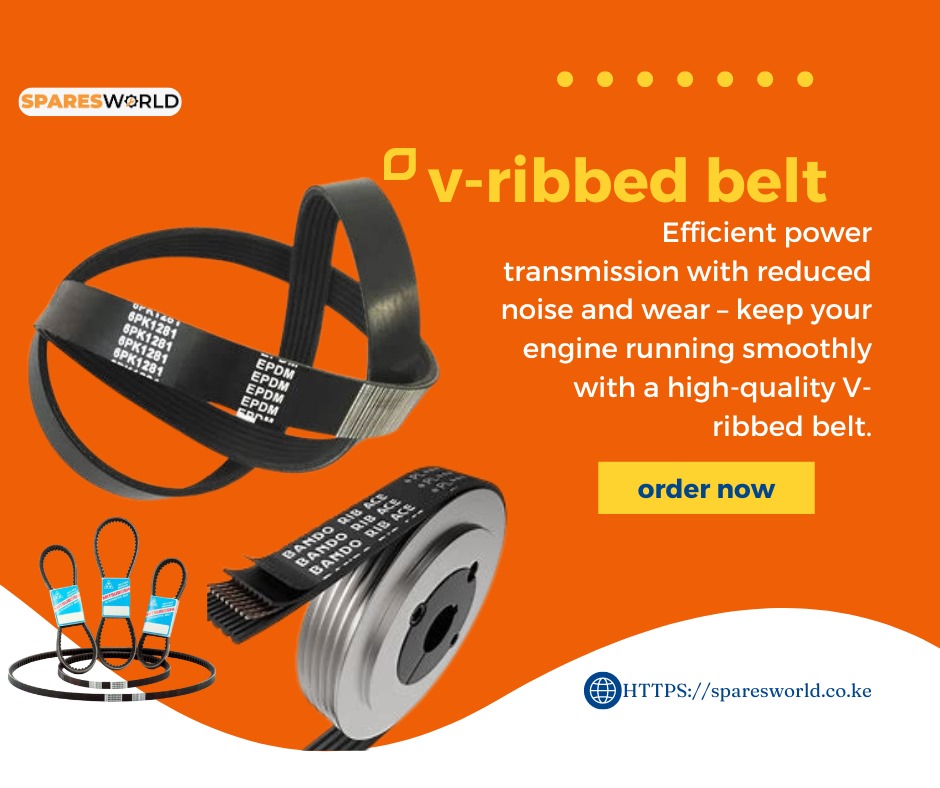Diagnosing Signs of a Faulty V-Ribbed Belt

Keep your engine running smoothly! Learn how to spot the early warnings of a failing v-ribbed belt to prevent costly repairs and maintain optimal performance.
Role of the V-Ribbed Belt in Your Vehicle
The V-ribbed belt, also known as a serpentine belt, plays a critical role in your vehicle's engine system. It drives multiple peripheral devices such as the alternator, power steering pump, water pump, and air conditioning compressor. By transferring power from the engine to these essential components, the V-ribbed belt ensures that your vehicle operates efficiently and safely.
Given its importance, any issues with the V-ribbed belt can lead to significant performance problems. Understanding its function helps highlight why regular inspection and maintenance are crucial for your vehicle's longevity.
Common Symptoms of a Worn or Damaged V-Ribbed Belt
A failing V-ribbed belt often exhibits several telltale signs. One of the most common symptoms is a squealing or chirping noise coming from the front of the vehicle. This noise usually becomes more pronounced when you start the engine or accelerate.
Other symptoms include visible cracks or fraying on the belt, loss of power to accessories like the air conditioning, and the battery warning light illuminating on the dashboard. If you notice any of these signs, it's important to address them promptly to avoid further damage.
The Impact of a Faulty V-Ribbed Belt on Vehicle Performance
A malfunctioning V-ribbed belt can severely impact your vehicle's performance. If the belt slips or breaks, it can cause the engine to overheat due to the water pump failing to circulate coolant effectively. Additionally, power steering may become difficult to operate, making the vehicle hard to control.
In some cases, a broken V-ribbed belt can leave you stranded as the alternator will stop charging the battery, leading to a complete loss of electrical power. Therefore, maintaining the integrity of this belt is essential for both safety and performance.
How to Inspect Your V-Ribbed Belt for Signs of Wear
Regular inspection of your V-ribbed belt can prevent unexpected failures. Start by visually examining the belt for signs of wear such as cracks, fraying, or glazing on the ribbed side. A shiny or slick appearance indicates that the belt is slipping and needs to be replaced.
You can also check the tension of the belt. A belt that is too loose or too tight can cause problems. Use a belt tension gauge if you have one, or consult your vehicle's manual for the proper tension specifications. If you're unsure, it's always best to seek the advice of a professional mechanic.
Preventative Measures and Maintenance Tips for V-Ribbed Belts
To extend the life of your V-ribbed belt, regular maintenance is key. Make it a habit to inspect the belt during routine oil changes and replace it as recommended by the vehicle manufacturer, typically every 60,000 to 100,000 miles.
Additionally, ensure that all pulleys and tensioners are in good condition and properly aligned. Misaligned pulleys can cause premature wear on the belt. Keeping your engine clean and free of oil leaks will also help prevent the belt from deteriorating prematurely.

 Loading..
Loading..